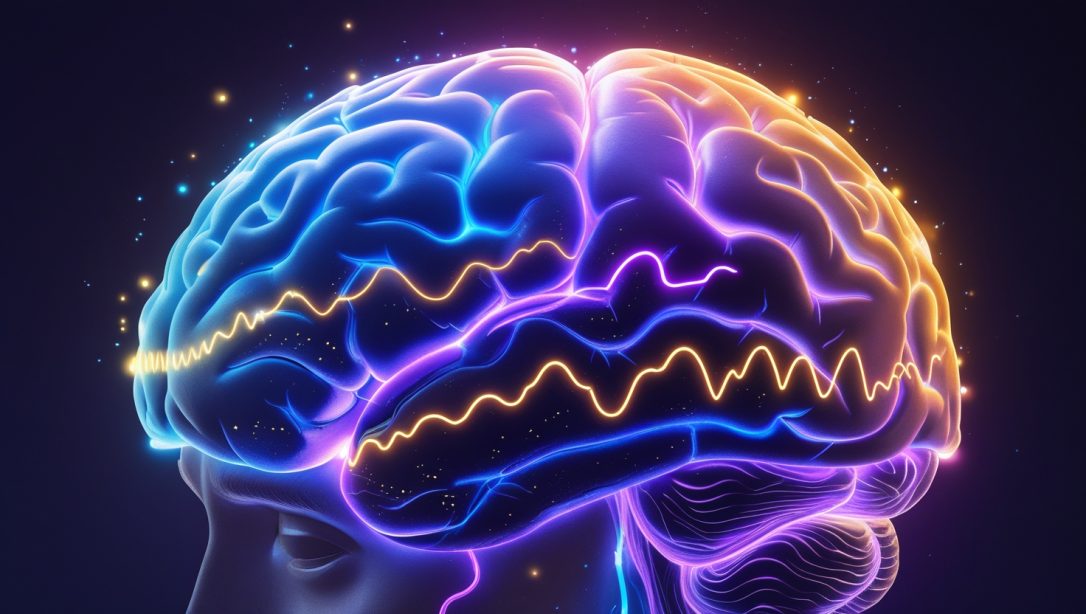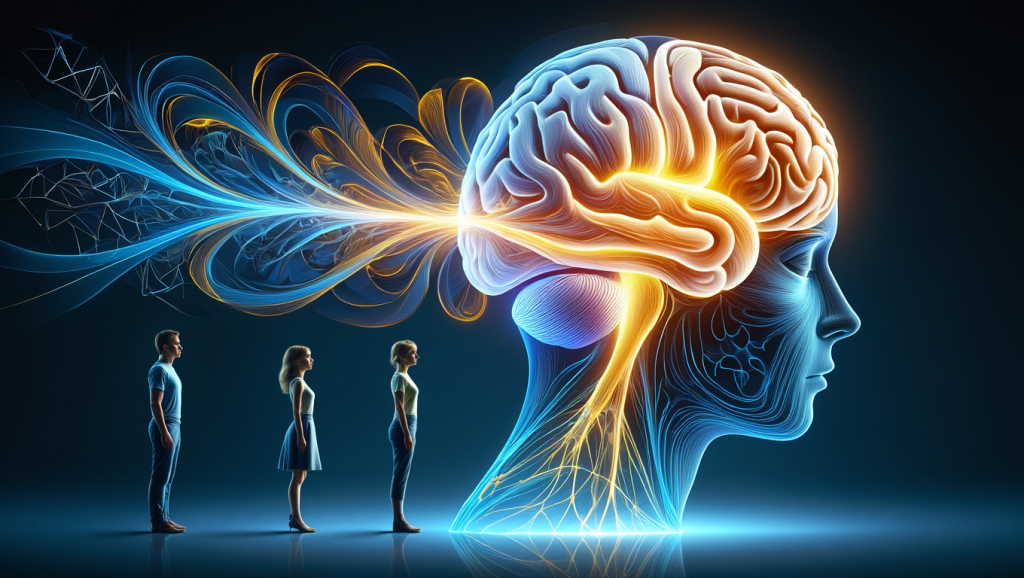Most people who hear about self-hypnosis immediately wonder, “Does it actually work?” The answer lies not in mysticism but in neuroscience. Modern brain imaging techniques have transformed our understanding of what happens in your brain during self-hypnosis, moving this practice from the realm of pseudoscience into evidence-based personal development.
The Neuroscience of Self-Hypnosis
When you enter a self-hypnotic state, your brain undergoes fascinating, measurable changes. Far from being “just imagination,” self-hypnosis creates distinct patterns of neural activity that researchers can observe using advanced technology like fMRI (functional Magnetic Resonance Imaging) and EEG (electroencephalography).
Here’s what science reveals about your brain during self-hypnosis:
Brain Wave Transitions
During normal waking consciousness, your brain primarily operates in the beta wave state (13-30 Hz), characterized by alert, analytical thinking. As you begin self-hypnosis, your brain gradually shifts into:
- Alpha waves (8-13 Hz): Associated with relaxed awareness, light meditation, and the gateway to your subconscious. This is where the critical filter between your conscious and subconscious mind begins to relax.
- Theta waves (4-8 Hz): The deeper hypnotic state where creativity, insight, and heightened suggestibility occur. This is similar to the brain state experienced just before falling asleep or during deep meditation.
Research published in the Journal of Neurophysiology confirms these transitions aren’t merely subjective experiences—they represent actual changes in neural electrical activity that can be measured and quantified.
“The theta brain wave state accessed during self-hypnosis creates optimal conditions for learning and incorporating new beliefs, similar to a child’s natural learning state before the age of seven.”
Key Brain Regions Affected by Self-Hypnosis
Neuroimaging studies have identified specific areas of the brain that show altered activity during hypnosis:
1. The Default Mode Network (DMN)
This interconnected group of brain regions is associated with mind-wandering and self-referential thinking. During self-hypnosis, activity in the DMN decreases, which explains the reduced analytical overthinking and heightened focus many experience.
2. The Salience Network
This network helps you determine what deserves your attention. During self-hypnosis, its activity changes, allowing you to focus deeply on specific suggestions while filtering out distractions.
3. The Executive Control Network
This network governs decision-making and emotional regulation. Self-hypnosis modifies its connectivity with other brain regions, potentially explaining how hypnotic suggestions can influence behavior and emotional responses.
4. The Anterior Cingulate Cortex
Research from Stanford University found significant changes in this region, which handles conflict resolution between different parts of the brain. This may explain why self-hypnosis helps reduce the conflict between what you consciously want and what your subconscious habitually does.
The Conscious-Subconscious Connection
One of the most valuable aspects of self-hypnosis is its ability to create a bridge between your conscious desires and your subconscious programming.
The Conscious Mind (5% of Mental Activity):
- Analytical and logical
- Makes judgments and decisions
- Often resists change due to its critical nature
- Has limited processing capacity (can handle 5-9 items simultaneously)
The Subconscious Mind (95% of Mental Activity):
- Stores all memories, habits, and beliefs
- Controls automatic behaviors and emotional responses
- Processes millions of bits of information simultaneously
- Responds strongly to imagery, emotion, and repetition
Under normal circumstances, the conscious mind acts as a critical gatekeeper, filtering information before it reaches the subconscious. During self-hypnosis, this filter becomes more permeable, allowing carefully constructed suggestions to reach the subconscious directly.
How Self-Hypnosis Creates Lasting Change
Understanding the brain mechanisms behind self-hypnosis explains why it can create more lasting changes than conscious willpower alone:
1. Neuroplasticity
Self-hypnosis leverages neuroplasticity—your brain’s ability to reorganize itself by forming new neural connections. When you repeatedly practice self-hypnosis with specific suggestions, you’re essentially creating and strengthening new neural pathways while weakening unwanted ones.
Research published in the International Journal of Clinical and Experimental Hypnosis suggests that regular hypnotic practice over 21 days—the commonly cited timeframe for habit formation—leads to measurable changes in both brain structure and function.
2. Bypassing the Critical Factor
During self-hypnosis, the analytical part of your mind (the prefrontal cortex) becomes less dominant. This temporary reduction in critical thinking allows suggestions to be accepted more readily by your subconscious mind.
3. Enhanced Emotional Processing
Brain imaging shows increased activity in emotional centers during hypnosis. This explains why self-hypnosis can be particularly effective for addressing emotionally-charged issues like anxiety, phobias, or trauma responses.
4. Improved Mind-Body Communication
During self-hypnosis, there’s enhanced communication between brain regions that process emotional responses and those that control physical functions. This neurological connection explains self-hypnosis’s effectiveness for psychosomatic conditions and pain management.
Self-Hypnosis vs. Meditation: The Neurological Differences
While meditation and self-hypnosis both create relaxed brain states, they have distinct neurological signatures:
Meditation typically aims to quiet the mind and observe thoughts without attachment. Neurologically, it often shows increased gamma wave activity and strengthened attention networks.
Self-hypnosis is more directed and goal-oriented, focused on embedding specific suggestions. Neurologically, it creates more pronounced theta wave activity and temporarily reduces analytical thinking while enhancing suggestibility.
Both practices can complement each other, but self-hypnosis has a more specific application for targeted behavioral or cognitive changes.
The Science-Backed Benefits of Self-Hypnosis
Research has documented numerous benefits of regular self-hypnosis practice, including:
- Stress reduction: Studies show decreased cortisol levels and activity in the amygdala (the brain’s stress center).
- Pain management: Neuroimaging reveals reduced activity in pain perception regions and increased activity in pain control centers.
- Improved immune function: Research has demonstrated enhanced immune markers after regular hypnosis practice.
- Enhanced focus and performance: Studies with athletes show improved motor coordination and focus following hypnotic suggestion.
- Better sleep quality: EEG measurements confirm improved sleep architecture after hypnotic interventions for insomnia.
Who Responds Best to Self-Hypnosis?
Interestingly, brain research has debunked the myth that hypnosis only works for “weak-minded” individuals. Studies at Stanford University have shown that people with higher cognitive flexibility and focused attention actually respond better to hypnotic suggestion.
Research suggests that approximately 80% of people fall into the middle range of hypnotic susceptibility, able to experience many of the benefits with proper training. About 10% are highly responsive, and another 10% may be minimally responsive to hypnotic techniques.
The good news? Research shows that hypnotic responsiveness can be improved with practice, suggesting that self-hypnosis is a skill that can be developed over time.
A Simple Brain-Wave Training Exercise
Try this science-based exercise to experience how you can influence your own brain wave states:
- Prepare: Sit comfortably, close your eyes, and take three deep breaths.
- Beta to Alpha: Focus on relaxing your body while maintaining awareness. Imagine peaceful colors flowing through your mind. Feel yourself becoming calm yet alert.
- Alpha to Theta: Deepen the relaxation by counting down from 10 to 1. With each number, imagine descending deeper into relaxation. As you reach 1, visualize yourself in a peaceful, safe place.
- Suggestion Phase: While in this receptive state, repeat your chosen affirmation 3-5 times, feeling its meaning resonating throughout your mind and body.
- Return: Count from 1 to 5, gradually becoming more alert. At 5, open your eyes feeling refreshed and energized.
Practice this exercise daily for 10-15 minutes to strengthen your neural pathways and increase your mind’s responsiveness to self-hypnosis.
Conclusion: Evidence-Based Self-Transformation
The scientific evidence is clear: self-hypnosis creates measurable changes in brain activity that can lead to significant improvements in wellbeing and performance. By understanding the neuroscience behind this practice, you can approach self-hypnosis not as a mysterious phenomenon but as a practical tool for accessing your brain’s natural abilities for change and healing.
In our next post, we’ll explore how to determine your personal suggestibility type and customize self-hypnosis techniques to match your unique mental processing style.
Have you noticed changes in your mental state when deeply relaxed or focused? You may have already experienced these brain wave shifts without realizing it. Share your experiences in the comments below!
Disclaimer: While self-hypnosis is supported by scientific research, individual results may vary. This information is educational and not intended as medical advice. Consult healthcare professionals for medical conditions.







